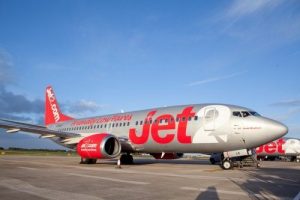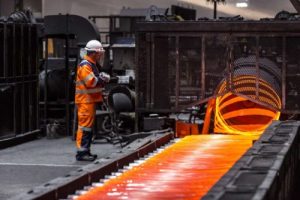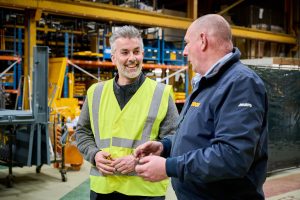Experts call for changes to transport scheme delivery to re-balance the economy
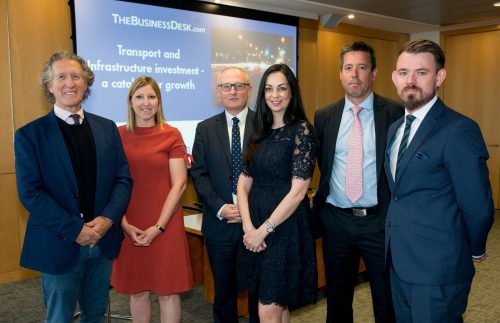
Balancing the economy through transport and infrastructure investment and introducing changes to the way in which largescale ‘”transformational” projects can be delivered is essential for the growth of the Yorkshire region, according to a panel of industry experts.
TheBusinessDesk.com’s Transport and Infrastructure – A catalyst for growth seminar, attended yesterday morning by more than 100 people and sponsored by WSP and DLA Piper, explored how such investment would retain and attract talent to the region, support import and export opportunities and future-proof housing and commercial schemes to boost the economy.
Panellists – Adrian Kemp of WSP, Martin Farrington of Leeds City Council, Allison Page of DLA Piper, Chris Harcombe of Doncaster Sheffield Airport and David Aspin of Munroe K – all called for collaboration on the matter across the north. Image gallery.

Allison Page
Page said: “Leeds is the biggest city in Europe not to have a rapid transport system and that is not for the want of trying by Leeds City Council but we have been let down by central government time and time again.”
She said that it was amazing to see other cities growing across the UK and the world because of transport and infrastructure development and investment.
“Cities who have been under-performing have used a variety of means to boost economic prosperity and often transport is at the heart of that change. There needs to be connections intra-city but also cities have to be connected outward bound to move around internationally too. There is a lot of evidence that transport is a catalyst for huge economic development growth.”
Kemp agreed that transport is a catalyst for growth but warned: “It needs to be part of a wider strategy to be engaged
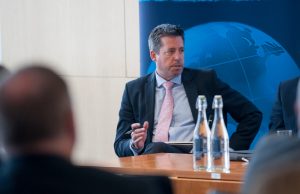
Adrian Kemp
in spacial vision at regional and northern level to truly and effectively re-balance the economy.
“It is not just about transport metrics anymore, it is also about understanding the socio-economic principles and demographic profiles. There is a real need for the industry to change as a whole as to the way it makes investment decisions.
“You then greater investment in cities such a Leeds because you are not looking at equity spend across regions.”
Kemp said: “The industry trips itself up at times. We talk about Northern Powerhouse Rail and the first metric was city-to-city journey time. Is that really the best benefit for the north? Or is it actual number of stations, even if it means longer journey times? Better stations in the likes of Bradford and York could actually deliver a better return.”
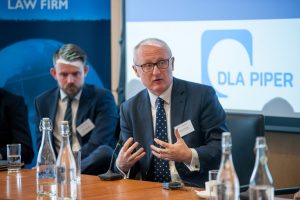
Martin Farrington
Farrington agreed that things needed to change in the way transport planning was implemented. “In terms of the way in which investment decisions on transport and investment are appraised in this country, the model is a simplification of reality that guides and aids decision making, not fundamentally determining it.”
He said he wanted to see an approach where it does fundamentally determine the right schemes because such decisions have “long-term, long reaching consequences” which he said would become a key issue if not correct.
Aspin, whose White Rose Office Park masterplan outlines plans build a major mixed-use scheme with a new railway station at the heart of it, said: “Through bringing forward that development, we can only justify economic growth due to the catalytic effect of the station. This suddenly opens up the area to a 5 minute journey time to Leeds and 32 minutes into Manchester. That suddenly transforms the real estate you have. We can see through infrastructure that we have a huge catalyst for growth.”
Farrington said the council had looked at the economic geography of the Leeds and key growth points, which
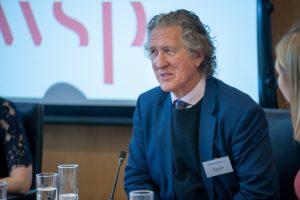
David Aspin
outlined key strategic sites in which the public sector has worked with the private sectors on schemes including Thorpe Park with Legal & General and Scarborough International Properties, Kirkstall Forge with CEG and White Rose Office Park with Munroe K.
“That’s why our proposals use rail infrastructure as one part of the solution to the transport challenge in Leeds. It needs to be linked to key geographical growth to key areas outside of the city centre and it starts the synergy between economic growth and transport infrastructure to make it happen,” he added.
Harcombe said it took engagement with public and private sectors to make transport schemes of major importance happen. Doncaster Sheffield Airport is looking to link into East Coast Mainline to provide regional fast rail connections, as well as to London. “Connectivity has such a huge impact,” said Harcombe.

Chris Harcombe
He added that Manchester generated more business journeys than anywhere in the north, which was not a surprise given a major international airport with more than 30 years of long-haul in airport. “You do that in Sheffield and you do that in Leeds and there is a real opportunity to balance the economy, not just north to south but also east to west,” said Harcombe.
He said when comparing North East and Yorkshire population growth, density, economic output, then Yorkshire should have a long-haul connected airport and said that there was room for both Leeds Bradford Airport and Doncaster Sheffield to grow in their catchment areas. “It is very difficult to forecast long term aviation growth. Often, the airlines favour the largest and that is something we need to be aware of,” he said.
Harcombe called for the Yorkshire region to look beyond the boundary; partnering with cities and with manufacturing and engineering sectors. “That starts to really change things and carries weight when talking to politicians,” he added.
Page said there ware competing interests when making decisions for transformative changes across transport and infrastructure. “We do need better collaboration and we do have huge move towards that at the moment. We have support from DfT. TfN has to have statutory powers to set its own agenda.”
She called for competing political interests to stop because that only created “lots of little things, not transformational change.”
Page said it was vitally important that business get behind the debate and make their voices clearly heard. That’s important with regards to devolution too, she said, adding: “A wider devolution deal will give us greater power and say on the transport agenda,” she added.
Inward investment was also debated on during the session. Aspin said a Chinese investor would be coming to Leeds, taking up office space and creating jobs; similarly that has happened with the Perform Group who recently announced larger offices in the city. “They are an amazingly strong, privately owned company – vibrant and growing. We are lucky to be part of that. Unique collaboration brings inward investment. Transport is the reason that people are coming to White Rose Office Park – because the future will be a station and will be able to bring people,” said Aspin.
“The future is looking at something which is a new place, a sustainable environment. That somewhere to live is driven through train access. We are looking towards autonomous car parking; changing the environment in which people live, commute and work.”
Farrington said housing schemes in East Leeds were being delivered, addressing housing need, and at the centre of those were plans to create the Leeds Orbital Road and a train station holt. “That’s a real success story as to how different transport models links directly to delivering housing growth in East Leeds,” he added.
Kemp said that there was a demand to upgrade and future-proof modes of transport and providing mobility as a service, with tickets that allow access to various modes of transport. “We are not going travel today like we do tomorrow,” he added.
Pure air freight traffic across the UK is dropping, said Harcombe. But he said there was scope to expand such freight services at DSA because it was well connected to road and rail networks, delivering quick service for good imported especially. “As airports gets busier and capacity comes under strain, airports tend to push cargo traffic away.
“There is a capacity crunch but that means there is opportunity to onshore more of the import/export traffic in the UK. There is huge opportunity to develop that. It is about educating people, including shippers and airlines, that there is a different way.”
Page said better connectivity from Hull to Liverpool, moving import and export goods between ports, needed to happen and while work had started, it was not quite at the speed to really deliver productivity that is needed.
She added: “All major transport projects take a long time. That time and development and delivery is not at the same rate as public expectation.”
“Such schemes will always take a long time to deliver in this country, in a way that perhaps in eurpore it does not. There needs to be joined up thinking right across the north – one plan for the north of England with political backing; persuading the DfT that we are competent in delivering. We need a strategy that ports can agree on which is slightly more selfless. This is going to have to happen if we want to achieve huge transformation economically in this region.”
Panellists also said that transport and infrastructure had its part to play in attracting and retaining talent. Kemp said that there was risk associated with migration of talent, both due to Brexit and because people often moved in a southerly direction; which he said demonstrated the need for greater connectivity.
Page added that transport played its part in keeping young people in Yorkshire as they want to move around easily.
The session concluded with questions, which raised points about how transport schemes of such scale would be financed and also how Leeds Bradford Airport would play its part in the Yorkshire landscape.
Farrington said that there had been huge improvements in LBA under AMP Capital ownership but that surface access would be critical to further boosting its success through schemes such as the parkway station, due to be delivered by 2021.
Kemp concluded: “Our global strength is critical. Key issues for my clients is whether a scheme is investible, they have a good local authority to work with and good access to talent. Connectivity and transport underpins all of those. It is a facilitation of the process.”

